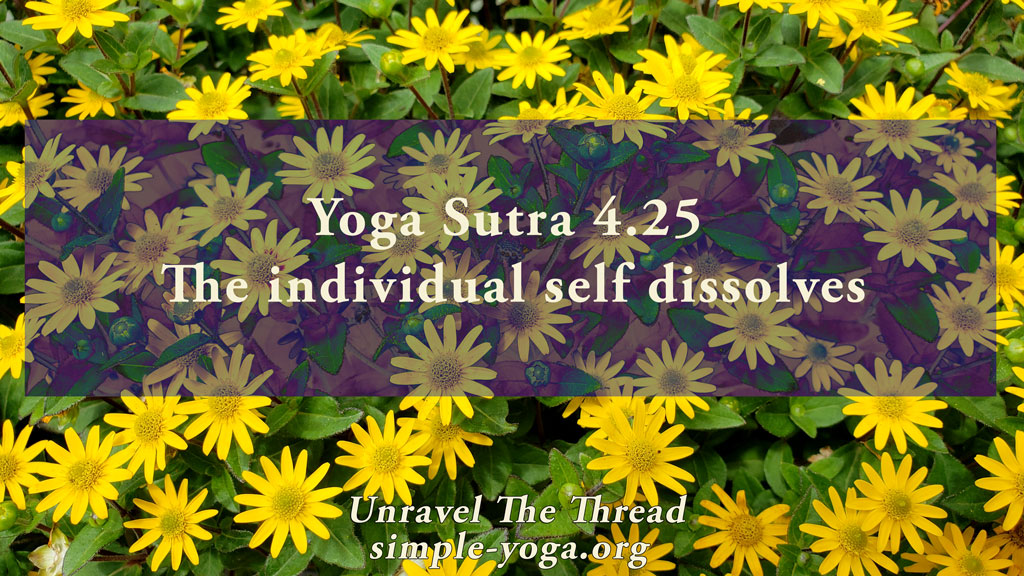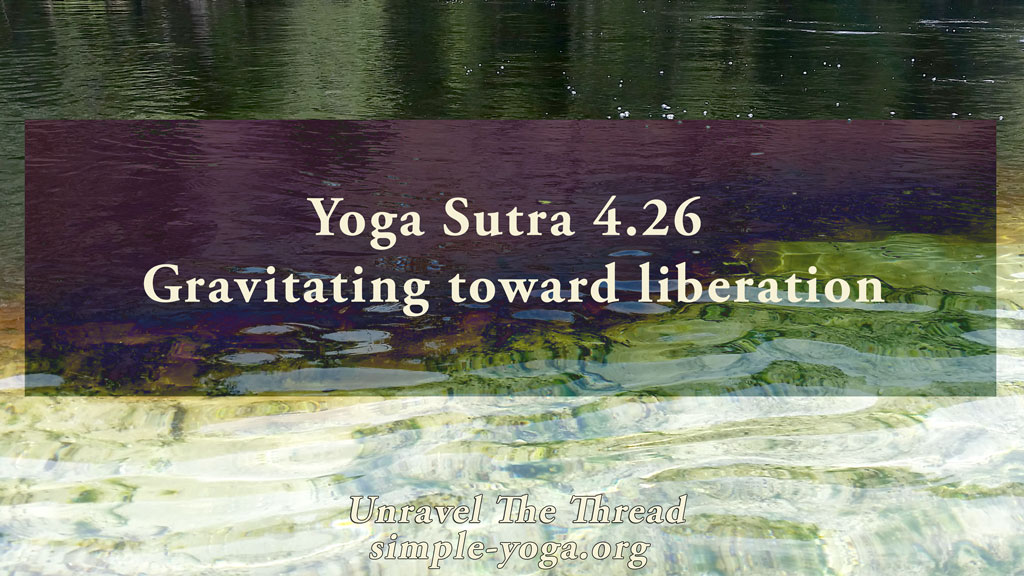4.25 The individual self dissolves

4.25 Realizing through direct experience the distinction between pure consciousness and experiences dissolves the notion of individual self.
These last sutras in Chapter Four of the Yoga Sutra are weaving together the threads that appear throughout the whole treatise. Some scholars argue that Chapter Four of the Yoga Sutra is a later addition, while others maintain that it’s part of the original compilation done by Patañjali. Regardless, continuity with the themes and topics in the previous chapters is evident. From the beginning of Chapter One, the problem faced by humans has been stated in terms of the dichotomy between the natural state of being grounded in the spacious peace of awareness and misidentifying with the world of temporary experiences. Remember that the first aphorisms in Chapter Two introduced the idea of not knowing one’s own true nature (avidya) as the major field where all afflictions sprout, including the notion of the individual self (asmita). Sutra 2.10 stated that subtle afflictions dissolve when the sense of identity dissolves. Discernment (viveka) of the fundamental difference between awareness and experiences is the means to liberation (2.26).
All mental processes are, by their own nature, temporary. This is evident in the impermanence of thoughts and all mental constructs. Emotions are similarly momentary. However, despite being impermanent, sensations, thoughts and emotions effectively attract attention to lead you to experience life in its richness. As sutra 2.18 indicated, your experiences are a vehicle for liberation from misidentification with what is temporary. When misidentification dissolves, the yogi returns to the natural state. With no wants, no needs and no agendas, the yogi experiences directly the difference between the world of experience and pure awareness. As explained in sutra 1.7, experiential knowledge is the highest form of knowledge. Rather than just thinking about this distinction, the yogi becomes established in the discriminative awareness formulated as the solution to suffering (in 2.25 and 2.26). That distinction, which is the foundation of freedom from attachment (1.16), the vehicle for liberation (2.26) and the threshold of omniscience (3.50) finally comes into being. The notion of an individual self who is isolated from the ongoing flow of life dissolves.
What are the remaining obstacles on your path?
Are thoughts, sensations and emotions drawing you away from presence? What beliefs and opinions lead you to forget that every single day you are alive is an extraordinary gift?
How can you clarify your true nature?
As usual, one more way of exploring the meaning of this sutra is by chanting it.
You can choose to chant it in its traditional form with some of the words coming together:
4.25 viśeṣadarśinaḥ ātmabhāvabhāvanāvinivṛttiḥ
विशेषदर्शिनः आत्मभावभावनाविनिवृत्तिः ॥२५॥
Another option is to chant each word in the sutra individually:
- viśeṣa
- darśinaḥ
- ātma
- bhāva
- bhavana
- vinivṛttiḥ
If you prefer, you may listen to the podcast:
This is an excerpt from the book Unravel the thread: Applying the ancient wisdom of yoga to live a happy life
If you find Simple-Yoga.org and Unravel the thread useful, consider supporting my labor with a donation, you may also donate using PayPal or Venmo. Thank you!


